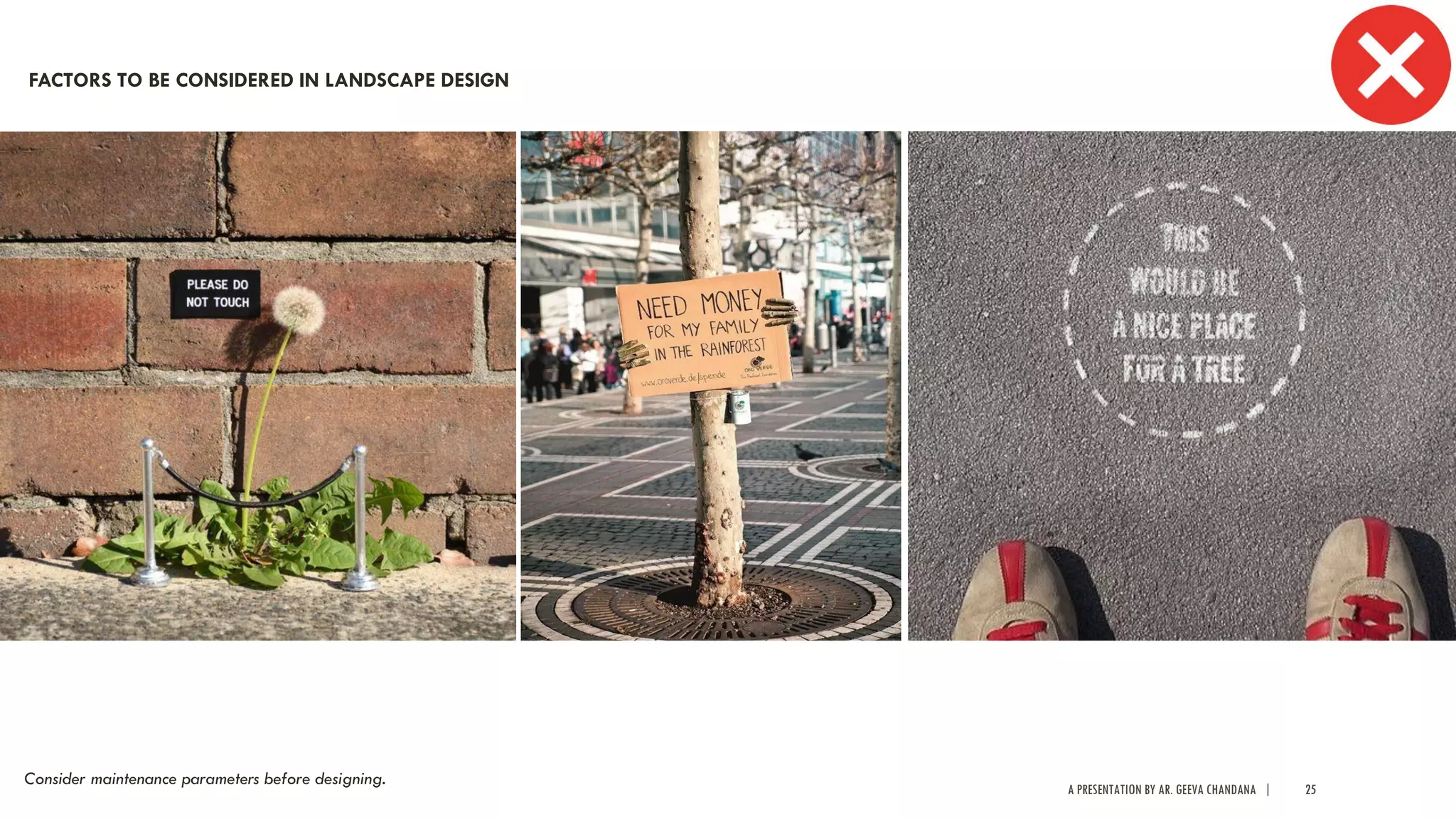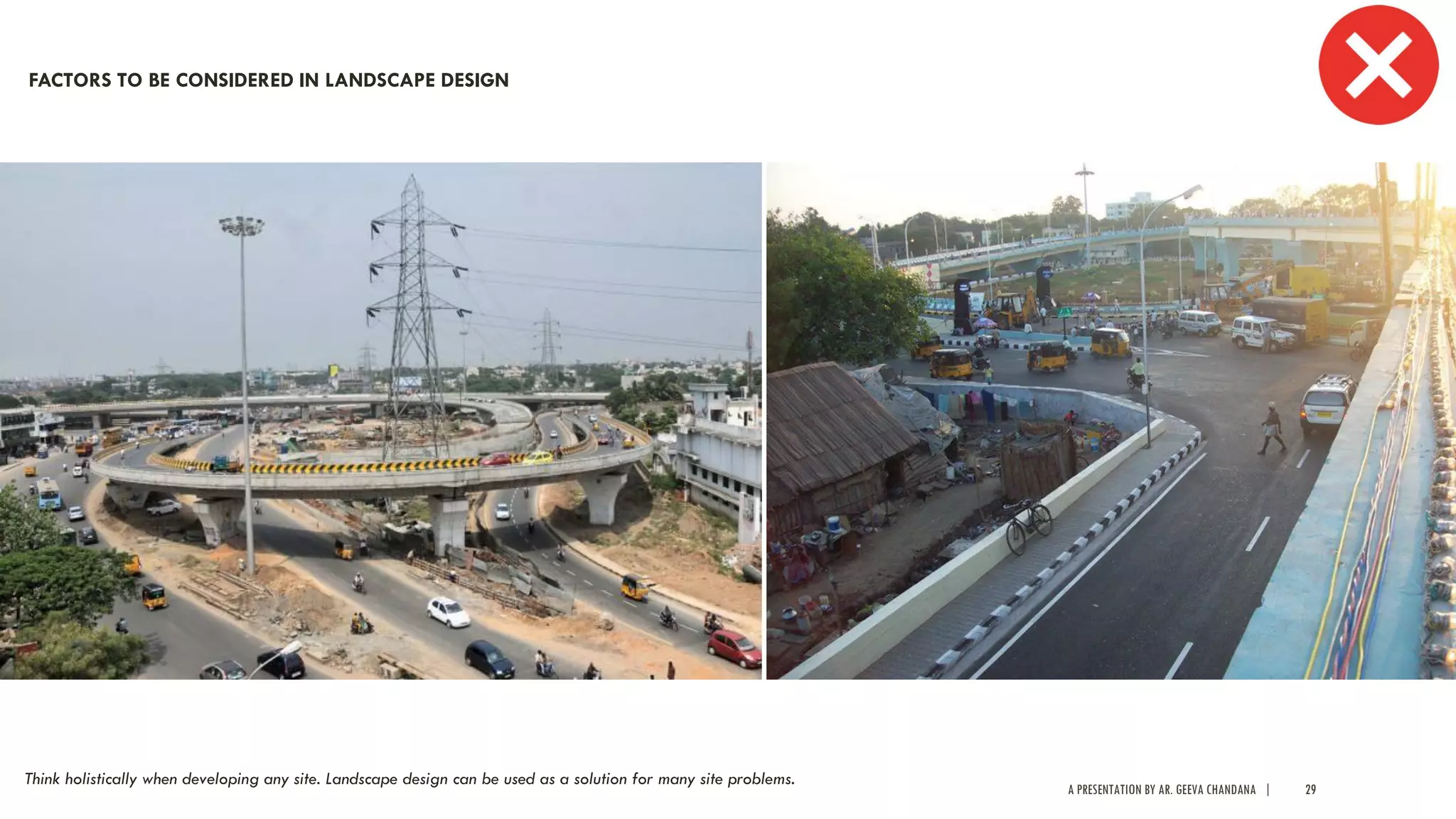The document is a presentation on landscape architecture by Ar. Geeva Chandana. It covers 5 units: introduction to landscape architecture, elements of landscape design, history of landscape architecture, urban landscape, and a landscape exercise. It discusses concepts like landscape, landscaping, landscape architecture. It outlines factors to consider in landscape design like maintenance, plant selection. It shows how landscape architecture can be used to enhance spaces, connect with nature, and narrate history.
![[ LANDSCAPE ARCHITECTURE ]
A PRESENTATION BY AR. GEEVA CHANDANA | 1](https://image.slidesharecdn.com/unit01anintroductiontolandscapearchitecture-200925140225/75/Unit-01-An-Introduction-to-Landscape-Architecture-1-2048.jpg)

![A PRESENTATION BY AR. GEEVA CHANDANA | 3
ASSIGNMENT
[ Stage-wise assessment of the final assignment ]
LANDSCAPING OF AN OPEN SPACE OF 2000 – 3000SQM IN YOUR THESIS PROJECT
Assignment Part 01 : Case Study of Landscape Project
Assignment Part 02 : Concept + Planting Scheme
Assignment Part 03 : Material Scheme + Furniture Scheme
Assignment Part 04 : Lighting Scheme + Grading and Drainage
Assignment Part 05 : Comprehensive Landscape Development Plan (CLDP)](https://image.slidesharecdn.com/unit01anintroductiontolandscapearchitecture-200925140225/75/Unit-01-An-Introduction-to-Landscape-Architecture-3-2048.jpg)
![[ What ---------------------- Why ------------------ Where -------------------- How ]
A PRESENTATION BY AR. GEEVA CHANDANA | 4](https://image.slidesharecdn.com/unit01anintroductiontolandscapearchitecture-200925140225/75/Unit-01-An-Introduction-to-Landscape-Architecture-4-2048.jpg)









![A PRESENTATION BY AR. GEEVA CHANDANA | 14
Landscape Architecture as a key element in all the famous historical monuments. [ creating balance between nature and built form]](https://image.slidesharecdn.com/unit01anintroductiontolandscapearchitecture-200925140225/75/Unit-01-An-Introduction-to-Landscape-Architecture-14-2048.jpg)



















































